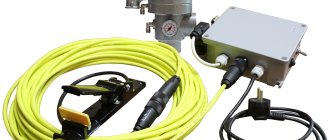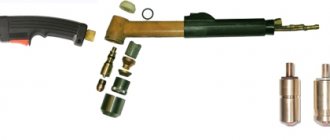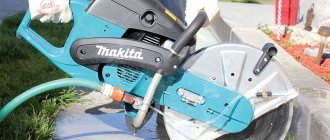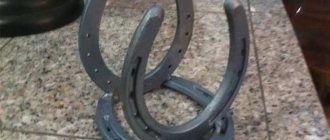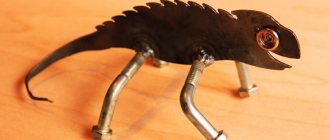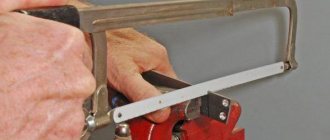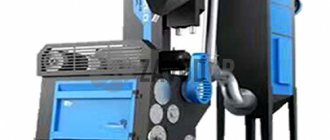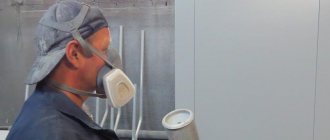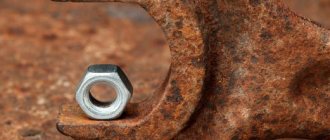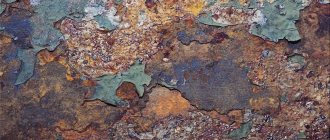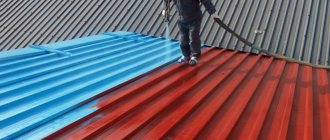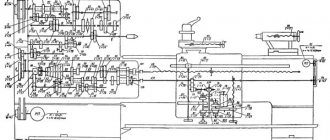- Types of corrosion of various metals
- Uniform corrosion
- Local corrosion
- Intergranular corrosion
- What can cause metal to rust?
- Methods to protect metal from corrosion
- Alloying
- Creation of oxide films
- Processing the external environment
- Cathode or anodic surface coating
- Non-metallic coating
- Electrical protection
- Tread
Metal corrosion is the destruction of metals or alloys as a result of electrochemical interaction with the environment. The consequence of the process is the deterioration of the quality of the material and its further destruction. The damage from corrosion is enormous, since not only equipment suffers, but also structures and communications of national importance. Manufacturers of metal products know the extent of the damage better than others. You can purchase high-quality metal, including stainless steel, in St. Petersburg and the region by calling +7 (812) 334-91-51.
Damage, damage...
Everyone has seen those orange-brown or yellowish rust spots on metal parts. The economic damage from metal corrosion is enormous. In the USA and Germany, the estimated damage from corrosion and the costs of combating it amount to approximately 3% of GDP. At the same time, metal losses, including due to the failure of structures, products, and equipment, amount to up to 20% of the total steel production per year. For Russia, exact data on losses from corrosion have not been calculated.
It is known for certain that it was rusted metal structures that caused the collapse of several bridges in the United States, including with numerous casualties. Environmental damage is also extremely unpleasant: leakage of gas and oil due to the destruction of pipelines leads to environmental pollution.
Types of corrosion and its causes
Before talking about rust on iron, let's briefly look at its other types.
Not only metals, but also non-metallic products are susceptible to corrosion. In this case, corrosion is also called “aging”. Plastics, rubbers and other substances are subject to aging. For concrete and reinforced concrete there is a term "fatigue". They are destroyed or their performance characteristics deteriorate due to chemical and physical exposure to the environment. Metal alloys - copper, aluminum, zinc - also corrode: during their corrosion, an oxide film is formed on the surface of the product, tightly adhering to the surface, which significantly slows down the further destruction of the metal (and the patina on copper also gives it a special charm). Precious metals are such not only because of their beauty, valued by jewelers, but also because of their resistance to corrosion. Gold and silver are still used to coat particularly sensitive electronic contacts, and platinum is used in the space industry.
The metal can corrode in some areas of the surface (local corrosion), cover the entire surface (uniform corrosion), or destroy the metal along the grain boundaries (intercrystalline corrosion). Corrosion accelerates noticeably with increasing temperature.
Methods for removing rust
Popular wisdom says that it is easier to prevent any problem than to later make heroic efforts to eliminate its consequences. Rust is no exception. Over the past 20-30 years, chemists and physicists have proposed many ways to prevent corrosion - from protective coatings to complex engineering structures - electrochemical protection stations.
If rust does appear, this is not a reason to give up: there are many effective ways to remove it, and the sooner active measures are taken, the greater the effect of their use will be. So, first things first.
Mechanical rust removal
Corrosion products have low adhesion and are therefore easily removed from the metal surface by mechanical action - for example, when treated with a metal brush. You can remove rusty deposits from large products using a grinding machine, while following a simple rule: you need to start with coarse grains, and use the finest grains for finishing. Areas of metal from which rust has been removed are completely defenseless against atmospheric influences. If they are not treated with anti-corrosion compounds that prevent contact with water and oxygen, the rusting process will only accelerate.
Chemical methods for removing rust
Knowing the nature and chemical composition of rust, it is logical to assume that it can be removed with the help of acids. It is known from a school chemistry course that metal oxides and hydroxides easily interact with acids, resulting in the formation of iron salts and the corresponding acid, and water.
For example, when exposed to hydrochloric acid, the following reactions occur:
- 2Fe(OH)3 + 6HCL → 2FeCl3 + 6H2O
- Fe (OH)2 + 2HCL → FeCl2 +2H2O
The resulting ferric chloride is a water-soluble salt that must be removed from the surface of the workpiece by simply rinsing in water and then wiping the surface dry. There is no need to wait until rust begins to form again; the cleaned areas should be treated with protective compounds.
When treating with acids, there is a danger of dissolving the metal, since iron in the electrochemical voltage series comes before hydrogen, it reacts actively with many dilute acids:
- Fe + 2HCl → FeCl2 + H2↑
For this reason, before doing chemical experiments at home, you need to read the relevant literature. A corrosion inhibitor, methenamine, will help eliminate the side effect; when adding only 1-2 g per liter of hydrochloric acid solution, the reaction with iron does not occur.
Rust converters
Liquid compounds based on phosphoric acid are an excellent way to prevent further rust formation on the surface of steel and iron products. With this processing method, only those areas of rust that are weakly adhered to the base are first removed. The iron orthophosphate formed during the reaction creates a durable protective film through which moisture and oxygen do not penetrate, thereby preventing further corrosion of the metal. To speed up the drying process, you can add 30-40 ml of isobutyl alcohol or 15 grams of tartaric acid per liter of 25% phosphoric acid solution.
Modern equipment for rust removal
Mechanical methods of cleaning surfaces from rust using improvised means are not always applicable; if the product has a complex shape, then it is not possible to treat all areas. Chemical methods also have their drawbacks; if basic safety rules are not followed, you can get a chemical burn or poisoning. Disposal of waste solutions also poses a certain problem.
The optimal way to remove rust, especially from the surface of products with complex geometric shapes, is soft blasting. The essence of the method is as follows: a stream of compressed air containing special abrasive granules is directed at the metal product. By changing the pressure, you can adjust the depth of the layer removed from the surface - this way only the layer of rust or scale is removed, and the metal remains untouched. ARMEX granules used in the Nordblast NB 28-2 soft blasting machine consist of tiny particles of soda and chalk. By applying high pressure to the surface, they easily remove not only rust, but also paint and varnish materials.
A distinctive feature of the method is its absolute environmental safety: the components used are chemically inert. Numerous studies have proven that there are practically no scratches or other microscopic defects on the metal surface, which can subsequently become centers for the re-formation of rust. The alkaline nature of the granules promotes the formation of a passive film on iron or steel products, protecting the bulk of the metal from corrosive destruction.
The best results from using the Nordblast NB 28-2 soft blasting machine were obtained when processing machine or yacht parts. The rust removal process depends on the degree of corrosion, usually it takes 1 day to completely treat a car, 2 days for a yacht.
The earlier the problem is detected, the easier it is to fight rust. Which method is most preferable - everyone decides for themselves, but you should not use old-fashioned methods if there is equipment that removes rust with 100% efficiency!
Types of Rust
Iron is more susceptible to corrosion. From a chemical point of view, rust is an oxidative process (like combustion). Elements resulting from oxidation in an oxygen environment are called Oxides. There are 4 main types.
1. Yellow rust - chemical formula FeO(OH)H2O (ferrous oxide). Occurs in a humid, oxygen-poor environment. Often found underwater. In nature, it exists in the form of the mineral wustite, while being a monoxide (it contains 1 oxygen atom).
2. Brown rust - Fe2O3 (double iron oxide): grows without water and is rare.
3. Black rust - Fe3O4 (tetravalent iron oxide). Formed with low oxygen content and without water, it is therefore stable and spreads very slowly. This oxide is ferromagnetic (under certain conditions it is magnetized in the absence of an external magnetic field), therefore it is potentially applicable for the creation of superconductors.
4. Red rust - chemical formula Fe2O3•H2O (ferric oxide). Occurs under the influence of oxygen and water, the most common type, the process proceeds evenly and affects the entire surface. Unlike all of the above types of oxidation, which are not so dangerous for iron, this one forms iron hydroxide in its thickness, which, when it begins to peel off, opens up more and more layers of metal for destruction. The reaction can continue until the structure is completely destroyed. It is used in iron smelting and as a dye in the food industry. It occurs naturally in nature under the name hematid.
Several types of rusting can occur simultaneously without particularly interfering with each other.
Chemical and electrochemical corrosion
Iron rusts if it contains additives and impurities (such as carbon) and comes into contact with water and oxygen. If salt (sodium and potassium chloride) is dissolved in water, the reaction becomes electrochemical and the rusting process accelerates. The massive use of these salts both in household chemicals and for combating ice and snow makes electrochemical corrosion a very common and dangerous phenomenon: losses in the United States from the use of salts in winter amount to $2.5 billion. When exposed to water and oxygen simultaneously, iron hydroxide is formed, which, unlike oxide, peels off from the metal and does not protect it in any way. The reaction continues either until the iron is completely destroyed or until the system runs out of water or oxygen.
Electrochemical corrosion can be caused by stray currents that occur when part of the current leaks from an electrical circuit into aqueous solutions or into the soil and from there into a metal structure. In those places where stray currents exit metal structures back into water or soil, metal destruction occurs. Stray currents occur especially often in places where ground electric transport moves (for example, trams and electric railway locomotives). In just one year, stray currents with a force of 1A are capable of dissolving 9.1 kg of iron, 10.7 kg of zinc, and 33.4 kg of lead.
In the second part of the article we will tell you how you can protect your metal structures from this scourge or defeat it if it is already attacking.
Natural rust
As you know, any metal surface loses its original appearance over time, losing not only technical, but also external properties. Metals are characterized by natural rusting, which occurs due to the negative impact of environmental factors. If it is necessary to create natural rust on metal, you can simply speed up this process by using chemical reagents - their action is aimed at forming a layer of metal corrosion.
Before carrying out a chemical reaction, you need to make sure that the metal used is susceptible to corrosion. Rust appears only on metal surfaces that contain iron. Some metals are more resistant to corrosion - often these are chrome compounds or so-called stainless steel. Cast iron and wrought iron are also suitable for chemical rusting.
First method: cupric acid solution
One of the easiest ways to create natural rust is to use a copper-acid solution. Its manufacture does not require the presence of any specific reagents; the most important thing is to strictly follow the technical conditions and procedure for performing the operation:
- About sixty milliliters of hydrochloric acid is poured into a prepared (pre-cleaned) container. A prerequisite is the use of protective glasses and gloves made of thick rubber.
- Next, a small amount of copper (copper wire or coins) must be dissolved in hydrochloric acid, after which the solution must infuse for seven days to accelerate corrosion processes on the metal.
- Residues of copper should be removed from the resulting composition. Dilute the prepared copper-acid solution with water in the proportion: one part acid to fifty parts water.
- Next, the metal is cleaned (removal of the paint layer, plaster and other finishing materials), after which the surface is thoroughly washed with a soap solution.
- The copper-acid solution must be applied using a special spray gun or a regular construction brush. At the same time, follow all safety rules and pay special attention to room ventilation.
Approximately two hours after application, a rusty effect will appear on the surface. There is no need to wash off the mixture, since the composition will evaporate on its own after some time. If there is not enough rust formed, the procedure can be repeated in order to achieve the desired result.
Method Two: Vinegar and Bleach
There is another way to make rust easily and quickly at home - using vinegar and bleach. This method is suitable only for surfaces that were not finished with a primer or various sealing compounds. The combination of vinegar and bleach gives the maximum effect of natural rusting if the metal products contain tin or iron.
Let's look at the instructions for coating a metal product with rust:
- At the first stage, carefully inspect the object for the presence of extraneous traces of old coatings, clean if necessary.
- Next, mix one part vinegar and two parts bleach in a prepared container. The volume of the mixture may vary depending on the size of the item you are going to rust.
- Place the metal product in the solution for thirty minutes - during this period of time, a cracked layer of rust will form on the surface of the object.
- Wipe up any remaining mixture with a regular paper towel, and discard any remaining vinegar and bleach.
- Once the product is completely dry, remove as much rust as necessary (depending on the desired result). Some people prefer a thick layer of rusty coating, while others prefer superficial corrosion on metal and other surfaces.
To fix the resulting effect on the object, use a special primer in an aerosol or a matte sealant in the form of a spray.
On video: three simple ways to create noble rust.
